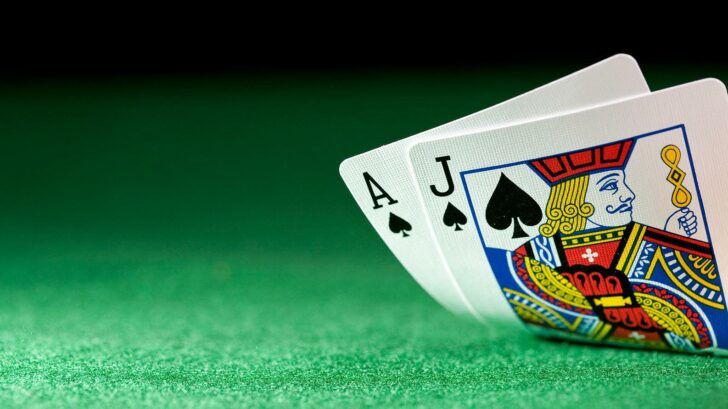An Expert’s Answer to 3 Mind-Boggling Blackjack Mathematical Problems

 Blackjack maths
Blackjack mathsDive into the mathematics of house advantage and probability of busting, to better understand how you can win at blackjack.
Blackjack is one of the most popular card games, and not just because it’s cool, but also because it has a very low house edge. This means that winning at blackjack is not just some utopian dream; with a little learning and practice, you can become rich.
While slots and roulette are really nothing more than games of chance, with blackjack you actually get to use your skills to turn the odds in your favor. However, it takes a lot of focus and determination to learn how to beat the casino, especially when math is involved.
The basic strategy – which you must absolutely learn by heart, if you want to play like a pro – is based on the total value of your cards, and the dealer’s up card. Your basic blackjack strategy chart will tell you if you should hit or stand, depending on these cards. Before playing in a casino, make sure you go to an online blackjack strategy trainer and practice enough to master these moves.
House advantage in figures
But let’s move on to more serious issues and get a little bit deeper into the details of house advantage.
Under the most favorable circumstances, using basic blackjack strategy will help you lower the house advantage to as much as 0.16%. But what does this mean, exactly? Figuring out what it all comes down to in terms of cash will help you understand better.
So let’s say you’re betting ten dollar on each hand. In this case, the 0.16% house edge means you will lose an average of 1.6 cents per hand in the long run. This 0.16% can also be considered your disadvantage. Figuring out the probability of winning a hand, now that’s a whole different issue…
Keep reading if you want to know how an expert card player answered three of the most mind-boggling mathematical problems related to blackjack:
Questions and answers
1. If the cards you are dealt amount up to a total of 16, what is the probability of busting if you hit, with a whole deck left to be used?
So the deck has 52 cards total. If you get a card anywhere from 6 to 10, or any face card, you will bust. Aces don’t count here, because they can also be counted as 1. That adds up to 8 types of card which can cause you to bust, and each of them appear 4 times in the deck. Mind sound complicated, but we did the math for you: your probability of busting is around 0.615.
2. What is the probability of not busting if you hit when you are dealt a 3 and an ace, in a game played with one deck?
With soft hands, the probability is 1 regardless of the card you are dealt next, because you always have the option of counting the aces as a 1 and this way you won’t bust.
3. If you happen to be the only one playing against the dealer, in a single-deck blackjack game, and you are dealt an 8 and a 6 while the dealer has a queen, what are the chances that you will bust if you decide to hit?
This is when you have to think about the cards remaining in the deck and card counting systems can help you figure that out. So your deck still contains all of the cards, minus an 8, a 6, a queen and an unknown card, which is the dealer’s second card.
Things might seem more complicated here, because in order to solve your problem, you have to figure out how the unknown card could affect your chances of drawing any particular card from the deck. The answer is simple, though: the dealer’s down card does not affect your probability of drawing a card.
Simply put, your chances of busting have nothing to do directly with the card the dealers draws. For any specific card in the remaining deck, the probability that you get it is 1/49, and the probability of you busting depends only on the card you receive from the deck, so that’s what you have to focus on.
So let’s get back to the problem: you will bust if you get a card with a value from 8 to 10, or a face card. There are 24 of these cards in a deck, but you already see 2 of them, so there are 22 remaining. A little math will demonstrate that the probability of you busting is 22/49, equaling 0.45.
Hope this information has helped you to better understand the mathematics of blackjack. And remember: practice as much as you can, either on free online blackjack sites, or at home, using a deck of cards.




